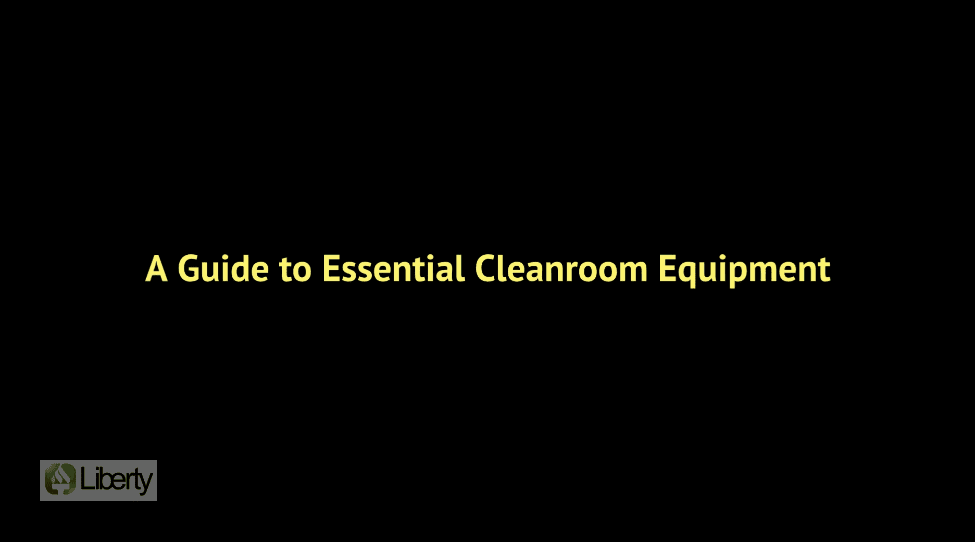Understanding the Design & Construction of Cleanrooms
Leave a CommentCleanrooms are specialized workspaces for critical processes and operations. They are designed to maintain strict standards of cleanliness for certain types of manufacturing and product preparation. Cleanrooms are commonly used for some applications in the manufacture of electronics, semiconductors, pharmaceuticals, medical devices, and aerospace equipment, as well as in labs and research settings.
Here, we’ll look at the major goals of cleanroom design, how they are constructed to meet those goals, and some of the standards cleanrooms must meet.
Understanding the Design & Construction of Cleanrooms
Cleanroom design is focused on controlling the environmental conditions in an enclosed space, as well as the size and number of particles (i.e., contaminants) in the area. Strict guidelines and classifications are set by international standards for cleanrooms. For these reasons, when constructing a new cleanroom, it is critical to consider environmental conditions and requirements like temperature, ventilation and filtration, airflow, and air pressure.
Working with an experienced cleanroom contractor is the best way to ensure all systems are designed and installed correctly and that they function as intended.
Begin by analyzing workflow and patterns of movement within and into and out of the room (this includes people and equipment). These impact airflow, temperature and humidity, and particle or contaminant levels. Materials used for ceilings, walls, and flooring can also have an effect on airflow, dust accumulation, and moisture levels. All of this information is used to plan HVAC and filtration systems that create and maintain the right conditions when the room is at rest and in use.
Many systems and equipment can be used in a cleanroom to achieve the required conditions, and not all cleanrooms are designed and built identically. Some examples of the components that may be used in a cleanroom include:
- Air showers
- Air pressure monitoring equipment
- Airlock entry and exit systems
- Gown rooms, donning/doffing space, and storage for protective equipment
- HVAC systems
- Fans equipped with high-efficiency particulate air (HEPA) filters
- Sticky mats to trap particles on shoes or that fall from above
A new cleanroom is evaluated at three points during construction to ensure proper conditions can be maintained:
- As built, when construction is complete but equipment and machinery are not moved in yet.
- At rest, when all equipment and systems are installed but not yet operational.
- In operation, when employees and equipment occupy and use the room for regular operations.
Cleanroom Classifications
The current international cleanroom design standards are ISO Standard 14644-1. It sets nine classifications (i.e., ISO 1 through ISO 9), each designating positive pressure requirements and the allowable number of particles of different sizes per cubic meter within the room. Particle sizes are grouped into six ranges from ≥ 0.1µ to ≥5µ.
For example, an ISO class 1 cleanroom, the most “clean” environment, requires that there be no more than 10 particles ≥ 0.1µ per cubic meter and no particles larger than that at all. In contrast, an ISO class 7 cleanroom allows more particles of different sizes per cubic meter, resulting in a slightly less “clean” setting:
- No requirements for particles ≥ 0.1µ to ≥ 0.3µ
- Up to 352,000 particles ≥ 0.5µ
- Up to 83,200 particles ≥ 1µ
- Up to 2,930 particles ≥ 5µ
ISO 14644-1 standards are very similar to the former US Standard 209 requirements, which have not been in use since 2001.
Different applications and manufacturing processes must comply with different cleanroom classifications, and this plays a major role in the design and construction of the room. Some applications may have additional requirements, such as sterile drug compounding. This process is subject to USP chapter 797 requirements, which include limits on particle sizes and counts and sets air pressure requirements, along with guidance for equipment and personnel procedures.
Cleanroom Supplies from Liberty Industries
To learn more about the design and construction of cleanrooms, please download our free in-depth Understanding the Design & Construction of Cleanrooms guide here!
Since 1953, Liberty Industries has specialized in cleanroom equipment, supplies, and construction services for customers in a range of industries. We provide everything required for your cleanroom or contamination control applications from cleanroom design engineering to protective garments, and from airflow equipment to particle counters.
Contact us today to learn more about our capabilities or to discuss the requirements of your cleanroom application.
A Guide to Essential Cleanroom Equipment
Leave a CommentCleanroom environments are ideal for safely handling specimens, conducting tests, and manufacturing and assembling sensitive goods. Properly maintaining air purity and protecting workers, devices, and products within the space, however, requires a combination of essential cleanroom equipment and protective garments to achieve. In this guide, we’ll review air handling and filtration, PPE, and cleaning equipment solutions to help ensure your cleanroom remains compliant with industry standards.
Air Handling and Filtration Systems
Supplying and maintaining clean air within a cleanroom is a top priority. Four common types of air handling and filtration equipment that make this possible include the following:
- High-Efficiency Particulate Air (HEPA) Filters. HEPA filters are a critical component of a successful cleanroom for reliably purifying the air. These filters remove 99.99% or more of particles sized 0.3 microns and up.
- Air Handling Units (AHUs). These systems help ensure the consistent circulation of purified air while carefully controlling cleanroom conditions. Based on the needs of your application, AHUs effectively manage certain aspects of the air within the space, such as its flow, humidity level, and temperature.
- Laminar Flow Equipment. Managing air’s flow direction and velocity can be just as important as controlling its humidity and temperature. Laminar flow equipment creates continuous streams of filtered air through a space and across surfaces in a particular direction, such as away from equipment for sterile operations.
- Pass Thrus. Also called pass-through airlocks or communicators and package transfer units, cleanroom pass thrus allow you to safely transfer items from an exterior space to your controlled interior environment to limit contamination.
Personal Protective Equipment (PPE)
Head and face coverings, clothing, and other equipment help protect workers from breathing in or coming into contact with harmful substances. At the same time, PPE minimizes the chance of cleanroom contamination from dirt, fibers, hair, or skin cells. Some common examples of PPE include:
- Caps, Hoods, and Related Coverings. These garments keep loose hair from falling onto equipment and work surfaces.
- Safety Goggles or Glasses. This eye protection keeps airborne particles from entering your eyes, along with any splashed substances.
- Face Masks. Fully covering your mouth and nose, these masks serve a dual purpose. Face masks protect a cleanroom environment from contaminants you exhale while preventing you from inhaling harmful particles into your respiratory system.
- Coveralls. These cleanroom garments will provide full-body coverage, from your neck to your wrists and ankles. Usually consisting of materials that develop and shed minimal lint, they protect you and your clothes while reducing fiber and particle contamination in the cleanroom.
- Gloves. Gloves are another example of PPE offering dual protection. They provide you with a layer of protection between your hands and harmful substances, and gloves lessen the chance of particle transfer onto handled materials.
- Booties and Overboots. This PPE prevents you from tracking dirt and other contaminants into a cleanroom on the soles of your shoes.
Maintenance and Cleaning Equipment
Proper air filtration and strict PPE use will prevent many potential sources of contamination from compromising your cleanroom. However, additional equipment options are available to help you maintain your cleanroom space.
For example, you can place shoe brush machines near a cleanroom entrance. These units scrape dust and dirt off the bottom of shoes using stiff bristles to reduce the risk of contamination from footwear. Sticky mats, or tacky mats, supplement shoe brush machines, their sticky surfaces pulling contaminants from the bottom of your shoes as you cross over the mat. Wipes, disinfectant solutions, and roll mops also allow your cleaning teams to wipe away and remove contaminants that made their way to surfaces within the cleanroom.
Essential Cleanroom Equipment From Liberty Industries
For a reliable cleanroom environment that meets or exceeds your required standards, Liberty Industries is here to help. We have numerous guides on subject matter related to the above, please feel free to download our free eBook on essential cleanroom equipment here.
Since 1953, we’ve been manufacturing and distributing contamination control equipment and accessories to clients worldwide. We aim to be your one-stop shop for customizable cleanroom product solutions, offering everything from Tacky Mats® and shoe brush machines to air showers and laminar flow benches. Our engineering team can even help you with the cleanroom itself, providing modular, hard- and soft-wall, and mini-micro cleanroom options.
Contact us to learn more about our extensive cleanroom equipment selections or request a quote today.



